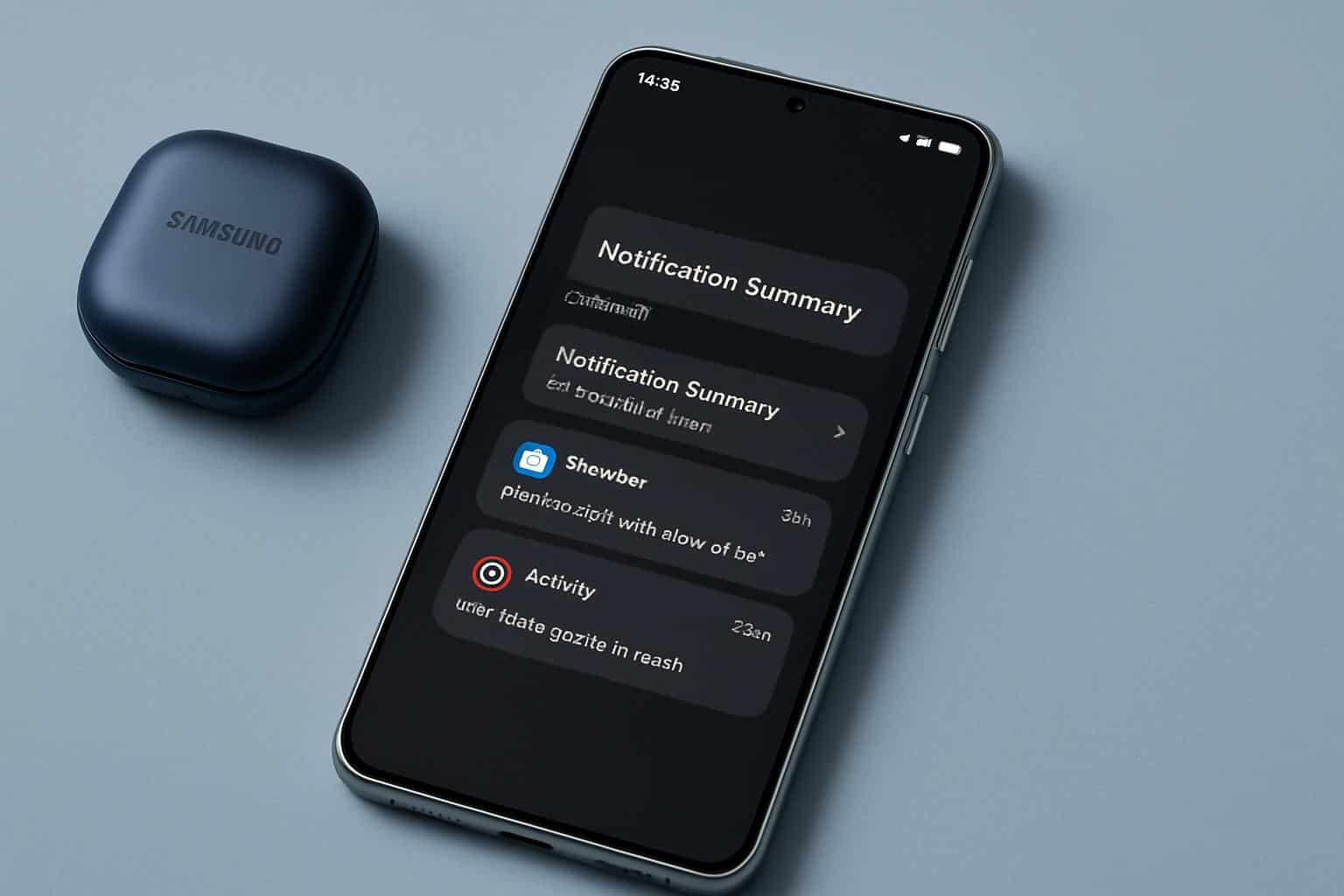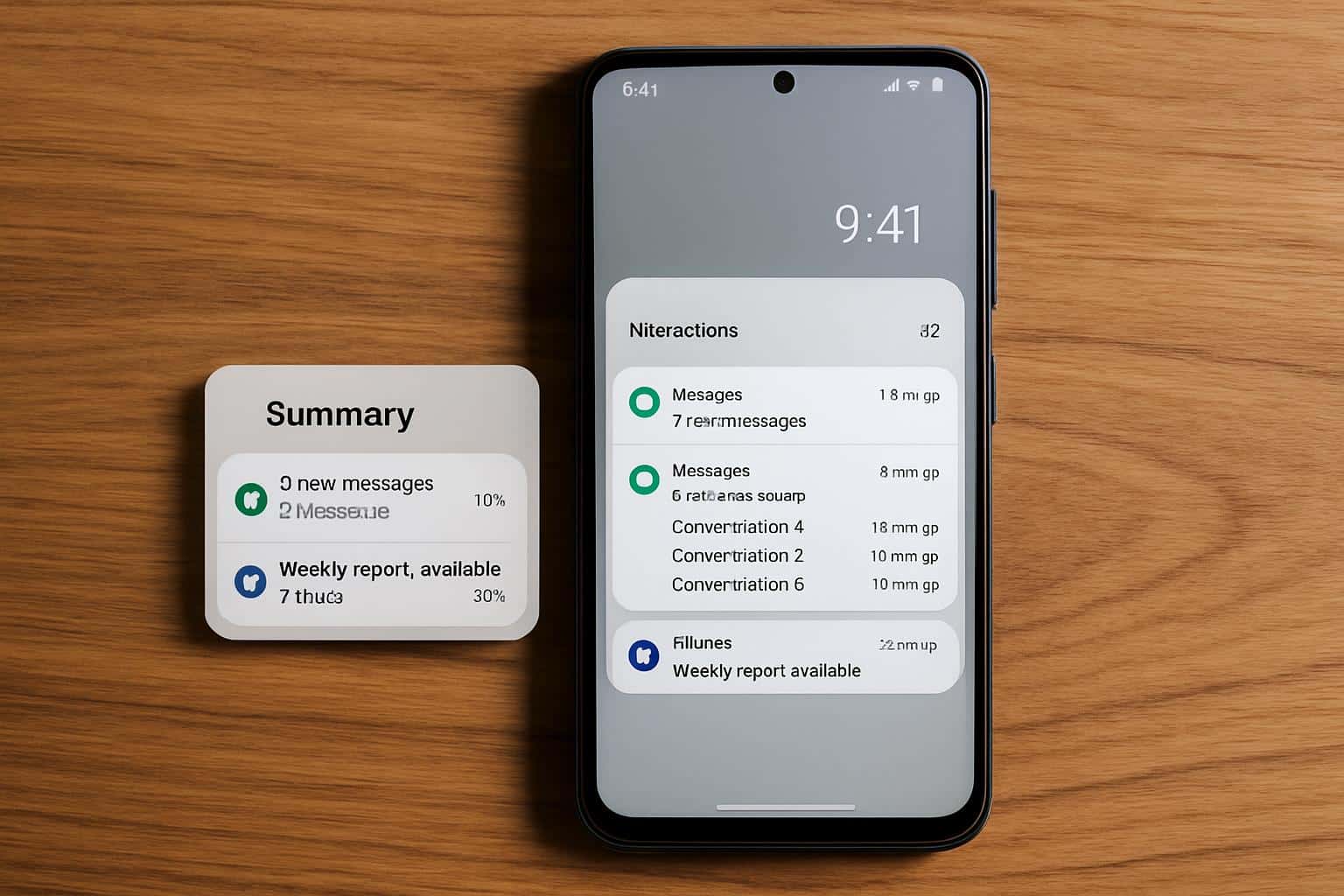Samsung is evidently trialing an Apple-esque notification summaries system for One UI, and while the prospect is less clutter and faster sum-ups, the AI reworking of my alerts makes me twitch.
That is all it takes for notifications to shape how you triage messages, and the possibility of abandoning context — or worse, an emergency message — is real.
- What Samsung is testing in One UI’s notification summaries
- Why Samsung’s approach mirrors Apple’s iOS notification ideas
- The upside for overloaded users who drown in notifications
- The risks that make me nervous about AI notification digests
- How Samsung could get notification summaries right
- What to watch next as One UI betas roll out this feature

What Samsung is testing in One UI’s notification summaries
First noted by SamMobile in the latest One UI 8.5 build for a Galaxy flagship, the feature pops up a prompt that hints at being able to summarize longer chat threads and messages into brief recaps. The text points to on-device processing and is explicit that data isn’t shipped off to Google, and it warns that there may be errors — standard language for generative AI features.
Early signs also point to it being opt-in, with a master toggle and per‑app exceptions buried in settings. That’s the right direction. The feature is not quite completely live in the leaked build, but its presence suggests that Samsung is pretty far along. One UI 8.5 will make its first appearance on an upcoming Galaxy S flagship and then come to other recent S, Z and some A, F and M series devices that are eligible for the One UI 8 branch.
Why Samsung’s approach mirrors Apple’s iOS notification ideas
Notification Summary was added to iOS 15 to deliver non‑urgent notifications in grouped batches. Added more recently, Apple Intelligence will provide AI-generated summaries of messages and notifications on supported devices. That approach has proved controversial: Some users love the peace, while others fear the system can bury timely information or miscalculate what really should matter.
Samsung’s approach would be a mix of the two, relying on on‑device AI — akin to Galaxy AI services like Note and Transcript Assist — to process content without transmitting your message off the phone. The pitch is simple: less clutter, more signal.
The upside for overloaded users who drown in notifications
Overload is a legitimate issue when you extrapolate. Industry surveys generally report that people get dozens, even hundreds of alerts a day. For years, researchers at Carnegie Mellon’s Human‑Computer Interaction Institute have been demonstrating that poorly timed interruptions diminish focus and negatively affect work. A well-done summary that cleanly partitions out the urgent from the non-urgent, and makes long threads scannable, could be a true quality-of-life improvement.
For Samsung, this falls into a bigger strategy: adopt on‑device models for speed and privacy, and add (or not) cloud features when necessary. If notification summaries are held on-device, latency should be minimal and privacy guarantees stronger than those of cloud-processed solutions.

The risks that make me nervous about AI notification digests
AI summaries can lose nuance, flatten tone or hallucinate details. That’s not a theoretical problem in notifications. Think two‑factor codes, flight updates, banking alerts, health service notifications or workplace compliance yadda yadda — situations where a missing digit or softened phrase could potentially have real-world consequences. A tiny false positive on “not urgent” could kick something back that should have gotten in front of you.
There’s also a transparency issue. If there is a default to showing a recap, I should be able to tell instantly that it’s only a digest of an item, not the full version, and get the original with one tap. Anything less risks trust erosion. And although Samsung’s prompt suggests on‑device processing, metadata and notification text are sensitive; users will look for clear communications about what is being analysed, stored or learnt.
Lastly, AI systems mirror their training data and guardrails. If the model disproportionately favors messaging apps to the detriment, say, of calendar changes or travel alerts, then the ranking is a bias you note every day. That’s a matter of design hiding behind the name intelligence.
How Samsung could get notification summaries right
Default to off with an obvious setup flow. Offer per‑app controls and category‑level exceptions, allowing users to block unwanted alerts from being displayed on the screen, such as promotional messages, account notifications or health data. Tag each one with an obvious label and a user-friendly “view original” function. Allow users to set strict rules — never abbreviate codes, always show the whole initial message in a thread, treat calendar invites like an emergency.
Publish accuracy standards and provide developers with tools to flag articles as unsummarizable or high priority. Continue processing on device, documentation and retention policies, clearly set the boundaries. Fall back gracefully to raw notifications when summaries break. But those aren’t nice‑to‑haves, they’re table stakes for a feature mediating the most sensitive stream that runs on your phone.
What to watch next as One UI betas roll out this feature
Expect the toggle to appear in One UI betas, and for Samsung to make it clear what defaults are opted into or out of, as well as which on‑device model is employed. If it debuts on the next Galaxy S flagship, then you can expect it to roll out to recent high-end and mid‑range models in due course. Compelling as the concept may be, execution is everything. Summarizing notes and recordings is one thing; rewriting your digital life’s front door is another.
I want the peace and the productivity — but not at the expense of missing what really is important. I’ll be the first one turning it on if Samsung gets the controls and transparency right. Until then, I’m watching and waiting with cautious optimism.

